
Basidiomycota is one of two large divisions that, together with the Ascomycota, constitute the subkingdom Dikarya within the kingdom Fungi. More specifically, Basidiomycota includes these groups: mushrooms, puffballs, stinkhorns, bracket fungi, other polypores, jelly fungi, boletes, chanterelles, earth stars, smuts, bunts, rusts, mirror yeasts, and the human pathogenic yeast Cryptococcus. Basidiomycota are filamentous fungi composed of hyphae and reproduce sexually via the formation of specialized club-shaped end cells called basidia that normally bear external meiospores. These specialized spores are called basidiospores. However, some Basidiomycota are obligate asexual reproducers. Basidiomycota that reproduce asexually can typically be recognized as members of this division by gross similarity to others, by the formation of a distinctive anatomical feature, cell wall components, and definitively by phylogenetic molecular analysis of DNA sequence data.

Rusts are plant diseases caused by pathogenic fungi of the order Pucciniales.
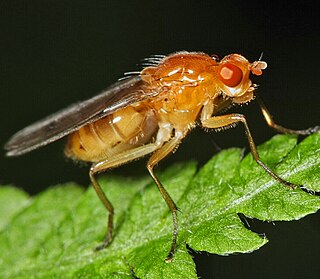
The Dryomyzidae are a small family of flies ranging from 4–18 mm long, with prominent bristles, and yellow to brown or rust-yellow coloring. The wings are very large. The subcosta is complete and well separated from vein 1. Larvae feed on decaying organic matter - carrion, dung, and fungi. The prelambrum protrudes from the oral cavity. Vibrissae are absent and the postvertical bristles are divergent.

The Pucciniaceae are a family of rust fungi that cause plant diseases, mainly on cereals such as wheat. The family contains 20 genera and over 4900 species.

Julius Oscar Brefeld, usually just Oscar Brefeld, was a German botanist and mycologist.

The Auriculariales are an order of fungi in the class Agaricomycetes. Species within the order were formerly referred to the "heterobasidiomycetes" or "jelly fungi", since many have gelatinous basidiocarps that produce spores on septate basidia. Around 200 species are known worldwide, placed in six or more families, though the status of these families is currently uncertain. All species in the Auriculariales are believed to be saprotrophic, most growing on dead wood. Fruit bodies of several Auricularia species are cultivated for food on a commercial scale, especially in China.

The Pucciniomycetes are a class of fungi in the Pucciniomycotina subdivision of the Basidiomycota. The class contains 5 orders, 21 families, 190 genera, and 8016 species. It includes several important plant pathogens causing forms of fungal rust.
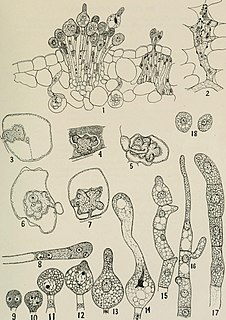
The Chaconiaceae are a family of rust fungi in the order Pucciniales. The family contains 8 genera and 75 species. Most species have a tropical distribution. Maravalia cryptostegiae has been used with success as a biocontrol agent against rubber vine in Australia.
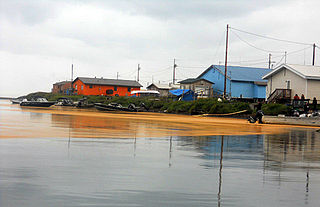
The Coleosporiaceae are a family of rust fungi in the order Pucciniales. The family contains 6 genera and 131 species.
The Mikronegeriaceae are a family of rust fungi in the order Pucciniales. The family contains 4 genera and 13 species.
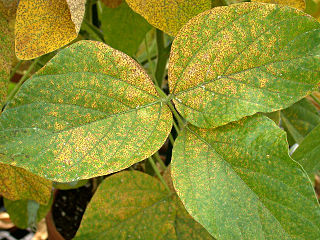
The Phakopsoraceae are a family of rust fungi in the order Pucciniales. The family contains 18 genera and 205 species.

The Phragmidiaceae are a family of rust fungi in the order Pucciniales. The family contains 14 genera and 164 species.
The Pileolariaceae are a family of rust fungi in the order Pucciniales. A 2008 estimate places contains 4 genera and 34 species in the family.
The Pucciniosiraceae are a family of rust fungi in the order Pucciniales. The family contains 10 genera and 57 species.

The Pucciniastraceae are a family of rust fungi in the order Pucciniales. The family contains 11 genera and 158 species.
The Raveneliaceae are a family of rust fungi in the order Pucciniales. The family contains 26 genera and about 323 species.
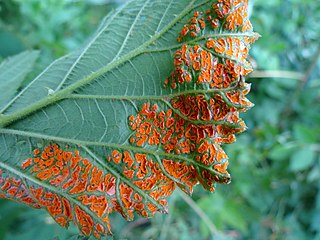
Arthuriomyces is a genus of rust fungi in the family Phragmidiaceae. The genus contains three species that are found in North America, Russia, China, and Japan. The genus is named in honor of American botanist Joseph Charles Arthur, noted for his research on rust fungi.
Frommeella (Frommeëlla) is a genus of rust fungi in the family Phragmidiaceae. The widespread genus contains two species.
Dasyspora is a genus of rust fungi in the family Uropyxidaceae.
Mimema can refer to one of the following:












